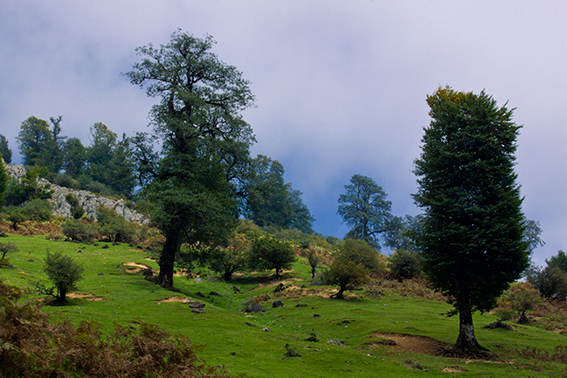As Iran takes steps to reintegrate internationally, tourism is emerging as a key driver for improved global relations. The current government has announced concrete plans, policies, and strategies aimed at promoting Iran’s tourism potential and exploiting the host of opportunities that it can offer for further economic development, according to Clyde & Co Abu Dhabi.
Iran ranks 98th among 140 countries on the Travel and Tourism Competitiveness Index (TTCI) 2013; significant progress compared to 2011, when it ranked 114th. Notably, Iran ranks high on the price competitiveness pillar of TTCI, which is correlated with low fuel costs and low ticket taxes and airport charges. Additionally, Iran scored highly for cultural resources and quality of natural environment. This is no surprise for a country with 17 UNESCO World Heritage Sites, diverse climate zones, topography and an ancient history that stretches from the beginnings of civilization. Such potential underpins the latest developments in tourism.
The cultural and historical legacy of Iran is unrivalled dating back over 10,000 years ago. The country is home to major archaeological monuments from various periods of history. The ancient Achaemenid ruins of Persepolis and Nagsh-e-Rostam near Shiraz in the South, Zoroastrian sites in Yazd, glorious mosques and bazaars of Isfahan are included in UNESCO World Heritage List.
Iran attracts a large number of religious tourists because of the holy sites in Qom and Mashad which bring visitors mainly from Iraq, Pakistan, Afghanistan, Lebanon, and Bahrain. According to official reports, Mashad hosted 25 million religious tourists (including Iranians) in 2013.
It has also been attracting a limited number of medical tourists (400,000 – 500,000 per year), after the opening of the country’s first hospital-hotel in Tehran in March 2014. The Iranian government recently announced that it will work towards building a strong healthcare tourism sector to attract a target of 20 million medical tourists by 2025.
Major challenges: Sanctions
Unfavorable economic conditions have created a major challenge for the Iranian tourism industry.
For instance, none of the international credit cards, such as Visa and Master Card, can be used for hotel reservation and payment in Iran. As a result, all payments must be made in cash. In addition, a number of banks in the US, UK, Canada, and Australia have put in place policies under which any bank accounts accessed from Iran will be blocked. Sanctions are therefore a major impediment to Iran’s tourism industry.
Infrastructure: Accommodation
Over the past few years, new hotels have opened in cities such as Tehran and Mashad as well as Kish Island. Despite the hotel projects in the pipeline, most existing hotels were built prior to the revolution in 1979 and need major renovation and refurbishment work. More importantly, there is a shortage of comfortable budget, 3-star hotels and motels as well as lodges and rest houses throughout the country. Currently, there is no international classification system for hotel ratings in the country.
State-owned enterprises operate the largest group of hotels in the country. Almost all of the state-owned hotels are operating at a loss due to inefficient management and lack of expertise.
Training
A major challenge facing the Iranian tourism industry is lack of hospitality education, that is, the skills and competencies normally expected from employees working in the sector. There are a number of hotel management and operation training institutions operating in Iran. Nonetheless, anecdotal evidence shows that employees’ attitude, skill levels, and language ability still fall short of those expected by international travelers.
Visa
Tough visa requirements for certain nationalities visiting Iran are said to be among the factors constraining limiting the tourism industry. However, according to some reports, visa requirements for travelers to Iran is under review, and citizens of most countries will soon be able to obtain visitor visas upon arrival at Iranian airports.
Regulatory framework
Iran’s Cultural Heritage, Handcrafts and Tourism Organization (ICHTO) is responsible for regulating tourism.
Applications for constructing a hotel establishment (such as hotels and resorts) should be filed with ICHTO (or its offices in the central city in the province where the infrastructure will be constructed).
Government incentives
The Iranian government offers a number of incentives for development projects in the tourism and hospitality sector, including:
• New hotels are free to set their tariffs based on market conditions;
• Lands for development projects approved by ICHTO are made available to the project under 5 year lease-to-purchase arrangements where the amount of lease payment will be determined by qualified valuers appointed by the government. This means that the developer will pay (in the form of monthly or annual rent) the net value of the land rather than the market value;
• Foreign investors can own land through a locally registered company in which they can hold 100% of the shares;
• Applications for tourism development projects will be fast tracked by local organizations such as municipalities;
• Subject to certain conditions, tourism projects benefit from exemptions and incentives under the Foreign Investment Promotion and Protection Act (2002);
• Access to financing from local banks for up to 80% of the project value. The rate of return on this type of financing (currently 6%) is significantly lower than that provided for other projects (normally above 22%);
• Various exemptions and reductions in municipal rates payable by the project;
• Tourism development free zones will be exempt from tax for 30 years.


